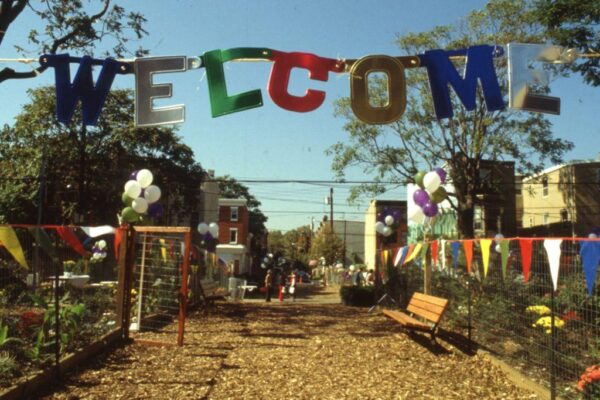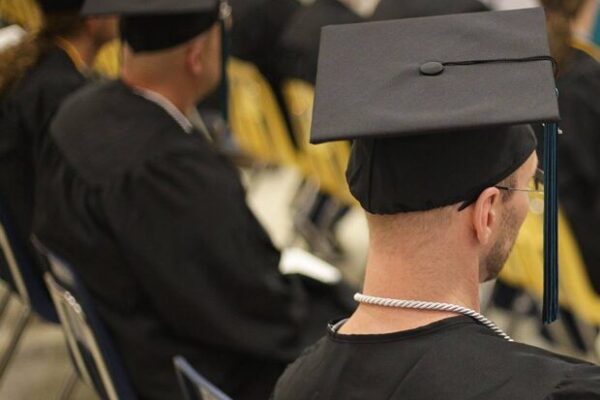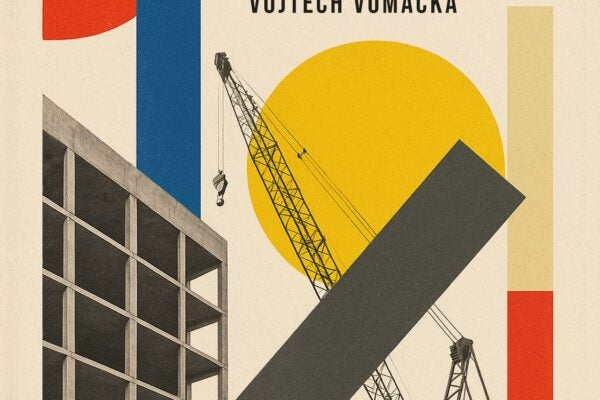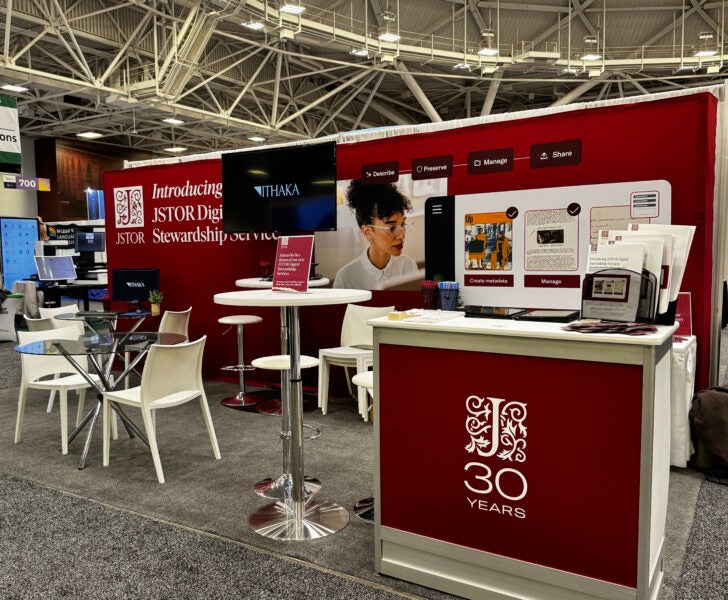
At this year’s Association of College and Research Libraries (ACRL) bi-annual conference, we had the privilege of marking both JSTOR’s 30th anniversary and the launch of a pivotal new initiative: JSTOR Digital Stewardship Services. It was a week of collaboration and conversation with the academic library community that has supported and shaped JSTOR since the very beginning.
Breaking through the backlog: JSTOR’s ACRL luncheon
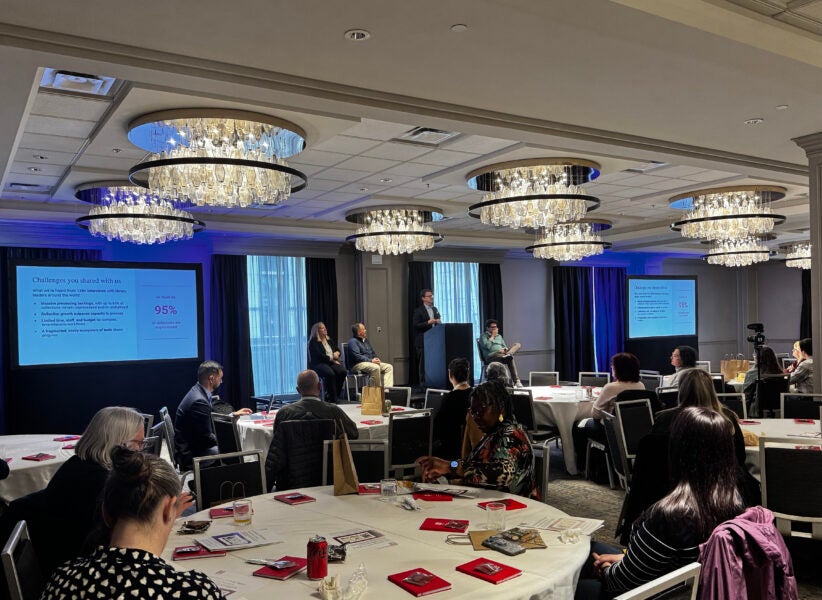
Our time at ACRL began with a luncheon titled “Breaking through the backlog! Exploring tech-driven solutions for digital collections stewardship with JSTOR.” Over lunch, we explored the challenges libraries face in processing growing digital collections, such as backlogs, staffing limitations, and fragmented tools, and we shared what we’ve been building together with the library and archivist community to address those needs.
Attendees were introduced to JSTOR Digital Stewardship Services, a cloud-hosted platform that integrates digital asset management with long-term preservation, AI-powered collection processing support, and paths for increased discovery including sharing on JSTOR. At the center of the conversation was JSTOR Seeklight, our new AI-powered technology that supports early-stage processing tasks such as descriptive metadata generation and project-level summaries. Drawing on JSTOR’s infrastructure and engineering, along with deep community expertise, early results indicate this innovative tool can cut the time it takes to generate initial metadata for 1,500 documents from over 375 hours to just 1.
Professor Colleen Bradley-Sanders, Head of Archives and Special Collections at Brooklyn College, called the new tool a “tremendous benefit,” highlighting that its use freed up time for more complex work and made a stronger case for funding digital stewardship initiatives. This feedback, and other examples like it, reflect our commitment to building solutions with and for librarians and archivists that deliver meaningful value.
JSTOR turns 30: An evening of reflection and recommitment
On Wednesday evening, we welcomed our community to a special reception marking JSTOR’s 30th anniversary. Kevin Guthrie, President of ITHAKA and JSTOR’s first employee, offered remarks filled with gratitude—for the librarians who believed in a new way of working, for the community that continues to lead, and for the shared mission that brought us together then and now.
Kevin reminded us that JSTOR’s founding idea—digitizing journals to save library space and expand access to scholarship—was once considered radical. “No sane man would ever do such a thing,” one early skeptic said. But with the steadfast partnership of library pioneers, JSTOR became a platform used worldwide.
Reflecting on a recent encounter with a librarian from Sumy State University in Ukraine, Kevin shared a story that underscored the stakes of our work. “She spoke about the library being not just a library, but a haven—and at times, a bomb shelter,” he said. “It was as tragic as it was inspiring. Her story reminded me, and I hope it reminds all of us, why our work matters.”
To close, Kevin spoke not of JSTOR’s own achievements, but of the collective mission we share:
“This isn’t about celebrating ourselves. It’s about reflecting on how far we’ve come and recognizing that we could never have imagined this future. Just as JSTOR became what it is through community and collaboration, the future will require the same—especially now, as we face another transformative moment.”
Launching JSTOR Digital Stewardship Services
The future of that mission is already underway. With JSTOR Digital Stewardship Services officially available, libraries and museums now have the opportunity to leverage and help to develop a mission-backed service that scales from digital asset management and sharing collections on JSTOR to full AI-assisted collection processing support and long-term OAIS-compliant preservation powered by Portico.
At its core, Stewardship Services is designed to empower institutions in their collection stewardship with confidence, speed, and sustainability.
Let’s keep the momentum going
Visit our website to learn more about Digital Stewardship Services or book a demo. Thank you to everyone who joined us at ACRL 2025, and to the community that has motivated JSTOR’s first 30 years. We’re just getting started!

